Your endometrium and receptivity
What is the role of your endometrium?
The endometrium is the inner lining of the uterus. Its thickness and other properties change in tandem with the menstrual cycle, as a response to fluctuations in hormone levels. For successful IVF treatment, a fertilized embryo must be implanted into your endometrium when it is at its most receptive.
What is the Window of Implantation? (WOI)
Your endometrium is receptive to an embryo only for a short period of time during your menstrual cycle, known as the window of implantation (WOI). But not everyone’s WOI is the same. At least 30% of women have a displaced WOI that occurs earlier or later than average.
What factors influence your WOI?
There are a number of factors that may result in a displaced WOI. If you fall into any of the following categories, you’re at a greater risk of a displaced WOI:
- A history of implantation failure
- Few remaining high-quality embryos
- A lower- or higher-than-average BMI
- Age 35 or older
- Low AMH levels
Performing the embryo transfer outside of your personal WOI can result in implantation failure. To ensure your transfer is occurring on the timeline that’s right for you, endometrial receptivity testing is recommended.
Endometrial receptivity testing
What is endometrial receptivity testing?
Endometrial receptivity tests look at specific “biomarkers” in your tissue or blood. These biomarkers have been shown to accurately reflect the status of your endometrium at the time the sample was taken.
Based on their analysis, endometrial receptivity tests can determine if the sample was taken before, during, or after your endometrium’s optimal receptivity window. Your doctor will use these results to adjust the timing, if required, of your embryo transfer in an upcoming cycle.
How effective is endometrial receptivity testing?
Endometrial receptivity testing is not needed or recommended for every patient. However, for patients who fall into the criteria listed above have experienced increased pregnancy success rates after using ERTs:
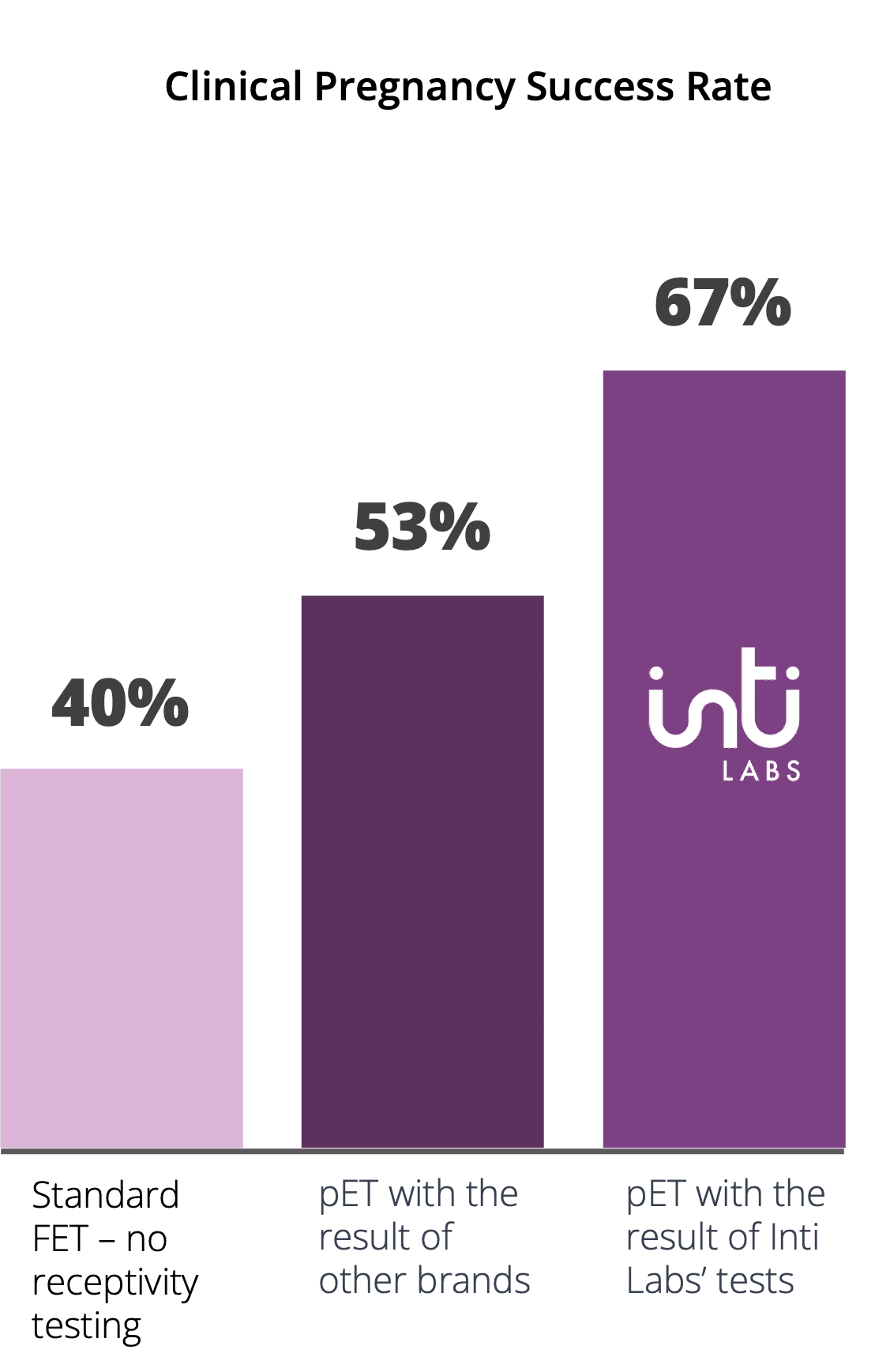

Why choose ora™?
ora™ is the first and only non-invasive endometrial receptivity test for accurately identifying the optimal time for your embryo transfer.
With only a simple blood sample, you can increase your chance of a successful pregnancy to over 70%.
ora™ fits easily into standard clinical schedules. When implemented early in your treatment plan, it eliminates the need for a costly and time-consuming mock cycle.
How is our technology different?
Non-Invasive
Other ERTs require an invasive and uncomfortable endometrial biopsy procedure to obtain a tissue sample for analysis. Obtaining a good sample can also be challenging and may lead to inconclusive results that require a new sample and analysis.
ora™ conducts its analysis using a simple and stable blood sample. microRNA (miRNA) biomarkers in the bloodstream reflect conditions in the endometrium with >95% accuracy. Further, they are a more reliable and stable solution than other ERTs, practically eliminating the chance of an inconclusive result.
Skip the Mock Cycle
Other ERTs require a costly and time-consuming mock cycle to replicate the conditions of a standard IVF cycle before acquiring the tissue sample.
Due to the non-invasive nature of ora™’s blood-based test, the sample can be taken on the day of embryo transfer of a standard IVF cycle (Day 5 of HRT cycle or Day 7 of natural cycle) and stored at our lab. If the implantation is successful, no further action is required. If unsuccessful, we’ll analyze the blood sample so you can go straight into a new treatment cycle with adjusted timing.
Is ora™ right for me?
ora™ can accurately identify the WOI of any patient, but not every patient needs receptivity testing. We recommended ora™ for those who meet any of the following conditions:
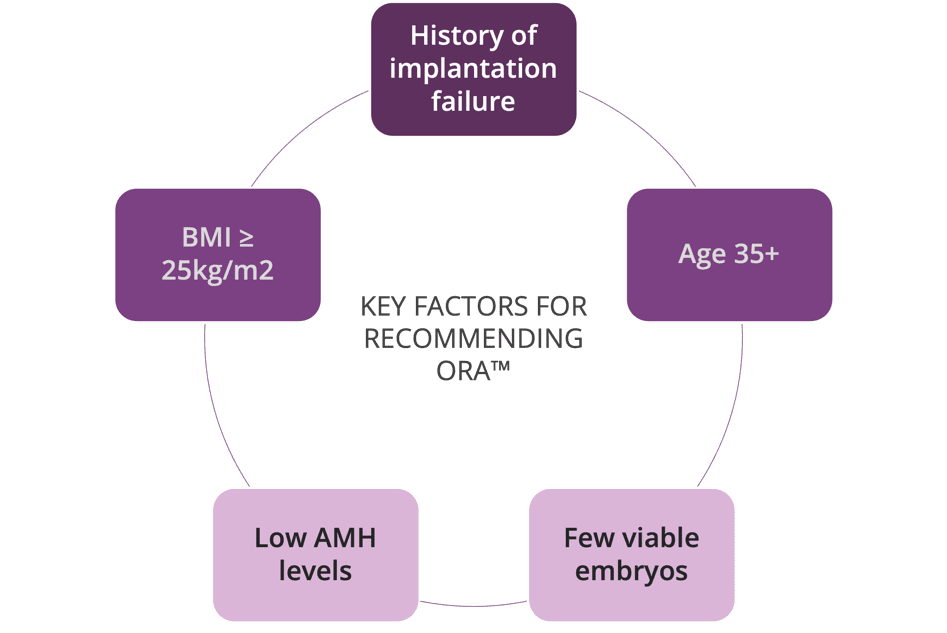

How does ora™ fit into my treatment plan?
The testing process change slightly, depending on whether this is your first IVF treatment cycle or you’ve experienced implantation failure in the past.
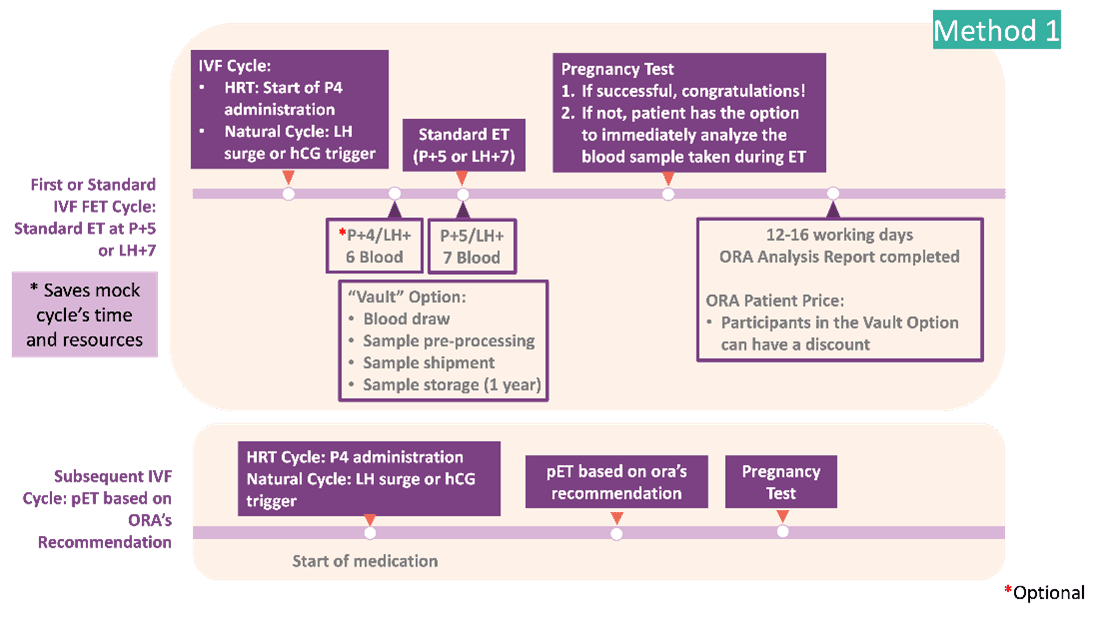

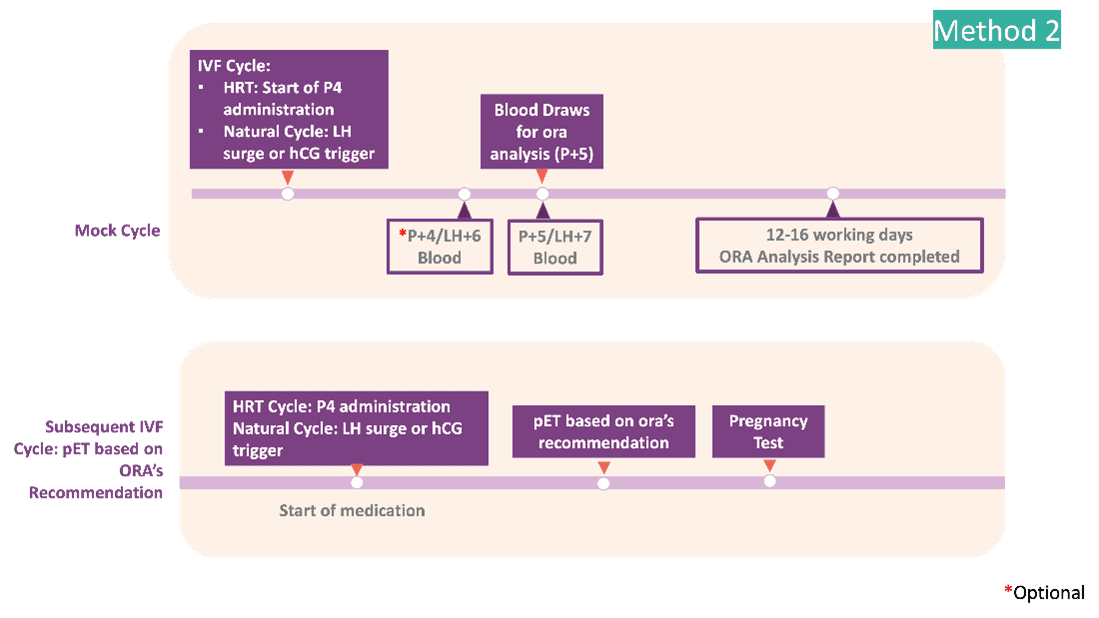

Which approach is right for me?
The testing process changes slightly, depending on whether this is the patient’s first IVF treatment cycle or if they’ve experienced implantation failure in the past.
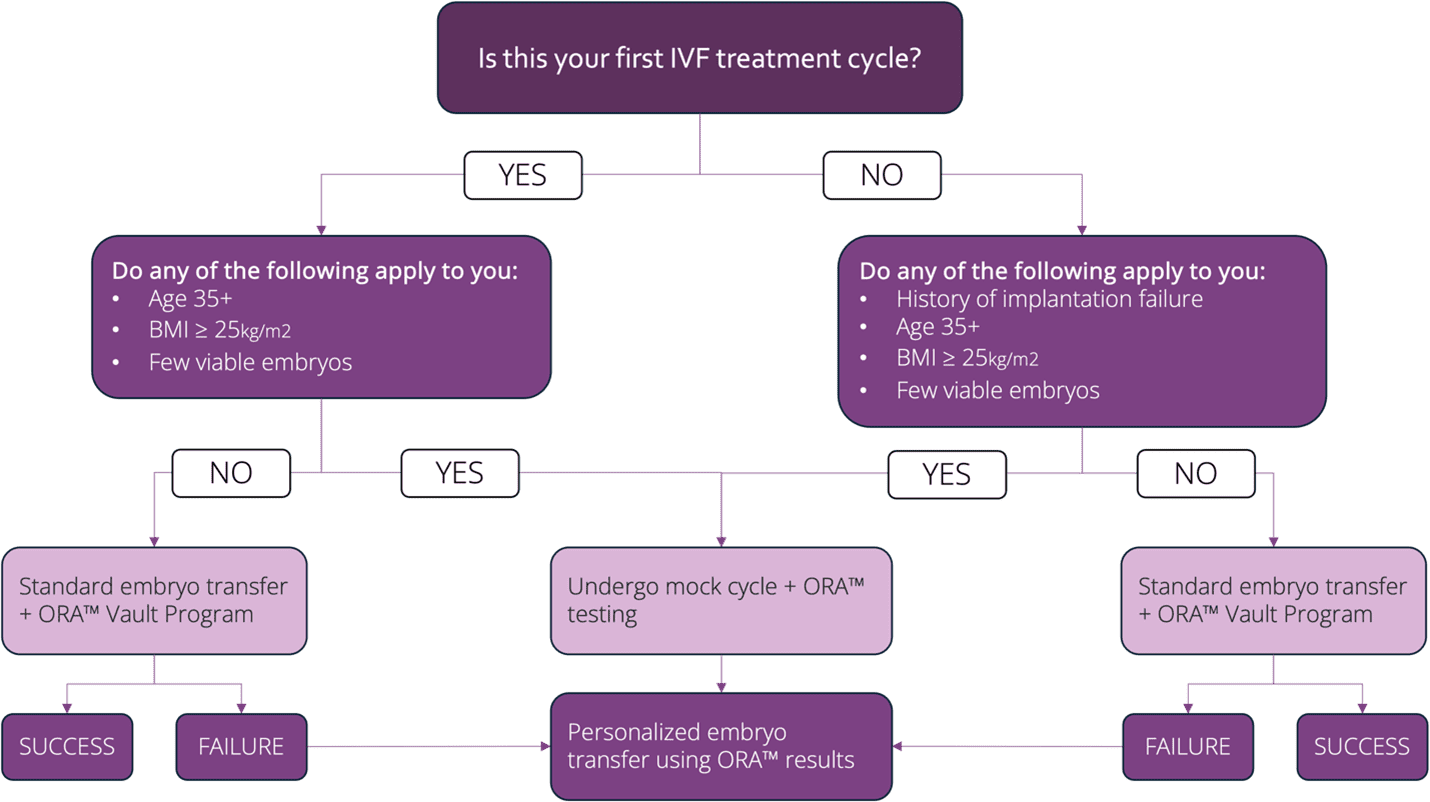

What is the process for ora™ testing?
The testing process changes slightly, depending on whether this is the patient’s first IVF treatment cycle or if they’ve experienced implantation failure in the past.
Create Optimal IVF Conditions
You will undergo a standard IVF cycle or mock cycle to create the optimal IVF conditions.
Obtain Blood Sample
Your doctor will collect a blood sample from you on day 4* and day 5 of your menstrual cycle of progesterone administration, or on day 6* and day 7 for natural cycles (after LH surge or hCG trigger shot).
Process the Blood Sample
Your sample will be sent to an ora™ laboratory for processing and data analysis.
Report Analysis
An ora™ analysis report will be provided to your doctor, informing them of the optimal time for embryo transfer.
“One of our patients had experienced several failed implantations and was down to her last viable embryo. After using ora™️, we received a Pre-Receptive result, meaning her window of implantation was 24 hours later than expected. Following ora™️’s recommendation for adjusted timing, her final embryo transfer and subsequent implantation was successful and is an ongoing healthy pregnancy.
The process was simple and patient-friendly — taking a blood sample is so much easier than an endometrial sample — and the benefits of a smoother and more comfortable experience for patients cannot be overstated. We look forward to continue offering our RIF patients a renewed chance at parenthood with the critical insights ora™️ provides.”
Dr. Tran Nguyen
Lyell McEwin Hospital, Embrace Fertility, FBW Gynaecology Plus
Adelaide, AUS
Talk to Your Healthcare Provider
Endometrial receptivity testing can help improve your chances of a successful IVF pregnancy, but it’s a decision that must be made with the doctor overseeing your fertility journey. Discuss with them today if you think ora™ might be right for you.
References
Chen, C. H., Lu, F., Yang, W. J., Yang, P. E., Chen, W. M., Kang, S. T., Huang, Y. S., Kao, Y. C., Feng, C. T., Chang, P. C., Wang, T., Hsieh, C. A., Lin, Y. C., Jen Huang, J. Y., & Wang, L. H. (2021). A novel platform for discovery of differentially expressed microRNAs in patients with repeated implantation failure. Fertility and sterility, 116(1), 181–188.
Click here for more info
Chen M-J, Hsu A, Lin P-Y, Chen Y-L, Wu K-W, Chen K-C, Wang T, Yi Y-C, Kung H-F, Chang J-C, et al. Development of a Predictive Model for Optimization of Embryo Transfer Timing Using Blood-Based microRNA Expression Profile. International Journal of Molecular Sciences. 2024; 25(1):76.
Click here for more info